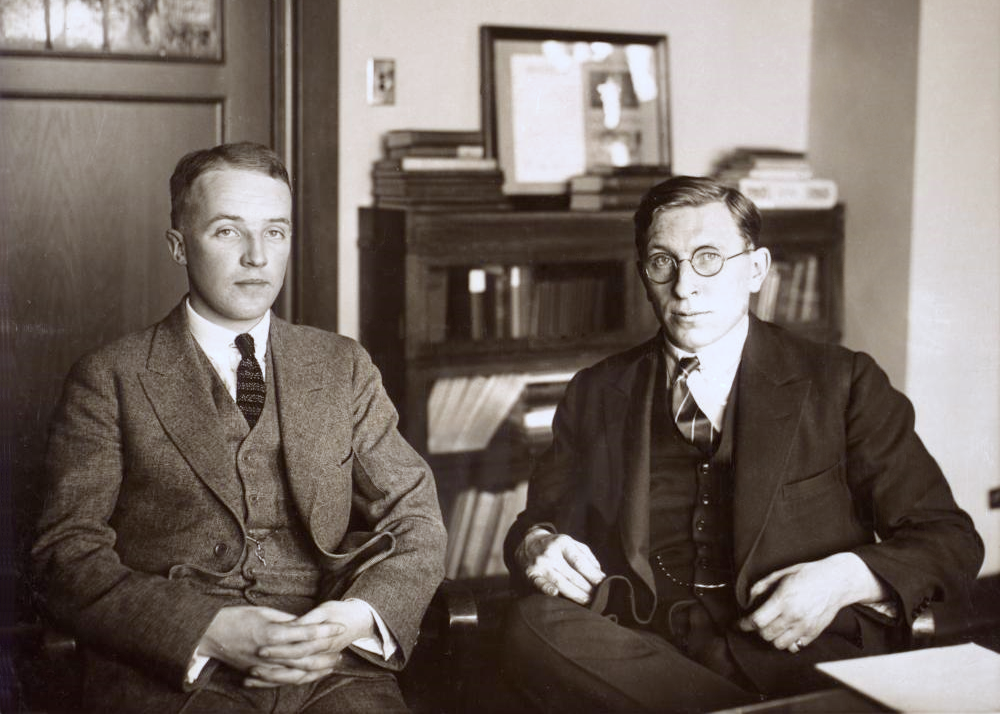
Frederick Banting and Charles Best administered insulin from the pancreas’ of dogs proving insulin’s efficacy in treating human diabetes
In 1921, Frederick Banting and Charles Best who extracted the hormone insulin from the pancreas’ of dogs and administered the extract to a Leonard Thompson, a 14-year-old boy dying from type I diabetes mellitus in a Toronto hospital, saving his life and proving insulin’s efficacy in treating human diabetes.
Following their discovery, virtually all insulin for human use was harvested from slaughterhouse animals, usually porcine or bovine. The name “insuline” had been introduced in 1909 for this hypothetic substance. Their experiments produced an extract of pancreas that reduced the hyperglycemia and glycosuria in dogs made diabetic by the removal of their pancreases.
They next developed a procedure for extraction from the entire pancreas without the need for duct ligation. This extract, now made from whole beef pancreas, was successful for treating humans with diabetes. Facilitating their success was a development in clinical chemistry that allowed blood sugar to be frequently and accurately determined in small volumes of blood.
.
Tags:
Source: University of Oxford
Credit: Photos: Frederick Grant Banting and Charles Best, Courtesy University of Toronto Library.
